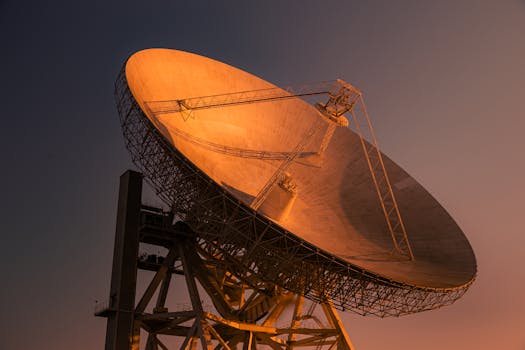
The Cosmic Web: How Satellites Enhance Communication and Environmental Monitoring
The Cosmic Web, referring to the network of satellites orbiting the Earth, plays a vital role in enhancing communication and environmental monitoring. The Cosmic Web: How Satellites Enhance Communication and Environmental Monitoring is a complex system that has been developed over the years to provide global coverage and connectivity. With the increasing demand for communication and environmental monitoring, the importance of satellites has grown significantly.
Introduction to Satellites and the Cosmic Web
Satellites are artificial objects that orbit the Earth, providing a wide range of services including communication, navigation, weather forecasting, and environmental monitoring. The Cosmic Web is a network of these satellites, working together to provide global coverage and connectivity. The first satellite, Sputnik 1, was launched in 1957, and since then, thousands of satellites have been launched into space, forming the Cosmic Web.
The Cosmic Web is made up of different types of satellites, including geostationary satellites, polar-orbiting satellites, and low-Earth orbit satellites. Geostationary satellites are placed in a fixed position above the Earth, providing continuous coverage of a specific region. Polar-orbiting satellites, on the other hand, orbit the Earth from pole to pole, providing global coverage. Low-Earth orbit satellites are placed in a lower orbit, providing high-speed communication and navigation services.
Enhancing Communication through Satellites
Satellites play a vital role in enhancing communication, providing global coverage and connectivity. Satellite communication is used in a wide range of applications, including mobile phones, internet services, and television broadcasting. Satellites are also used in emergency response situations, providing critical communication services in areas where traditional communication infrastructure is damaged or non-existent.
The use of satellites in communication has several advantages, including global coverage, high-speed data transfer, and reliability. Satellites can provide communication services in remote and underserved areas, connecting people and communities around the world. However, satellite communication also has some limitations, including latency, interference, and weather-related outages.
Environmental Monitoring through Satellites
Satellites also play a critical role in environmental monitoring, providing valuable data and insights on the Earth’s climate, weather patterns, and natural resources. Satellites are used to monitor deforestation, ocean health, and wildlife populations, providing critical information for conservation efforts. Satellites are also used to track climate change, providing data on temperature, sea-level rise, and extreme weather events.
The use of satellites in environmental monitoring has several advantages, including global coverage, high-resolution data, and real-time monitoring. Satellites can provide data on hard-to-reach areas, such as the Arctic and Antarctic regions, and can monitor environmental changes over time. However, satellite-based environmental monitoring also has some limitations, including data accuracy, resolution, and availability.
Conclusion
In conclusion, the Cosmic Web, made up of thousands of satellites orbiting the Earth, plays a vital role in enhancing communication and environmental monitoring. Satellites provide global coverage and connectivity, connecting people and communities around the world. Satellites also provide valuable data and insights on the Earth’s climate, weather patterns, and natural resources, supporting conservation efforts and informing policy decisions.
As the demand for communication and environmental monitoring continues to grow, the importance of satellites will only increase. The development of new satellite technologies, such as small satellites and satellite constellations, will provide even more opportunities for communication and environmental monitoring. The Cosmic Web is a critical component of modern society, and its impact will be felt for generations to come.